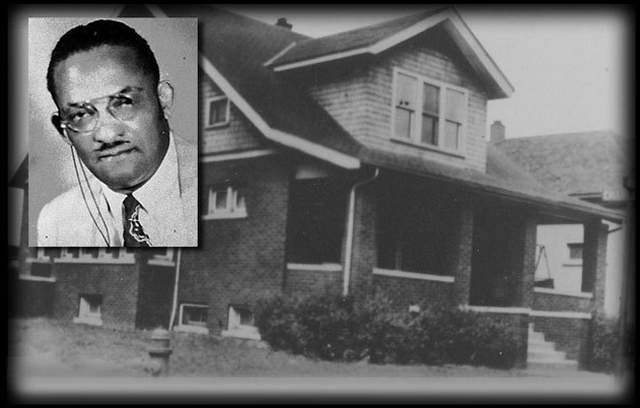 On September 9, 1925, a white mob converged on the home of Dr. Ossian Sweet, an African-American.
On September 9, 1925, a white mob converged on the home of Dr. Ossian Sweet, an African-American.
The bungalow was located in a predominately white neighborhood at 2905 Garland at the corner of Charlevoix on the city’s lower east side. Dr. Sweet bought the house earlier in the year for $18,500, about $6,000 more than its fair market value.
The Sweet family, who moved into the house on September 8, endured continual race-related badgering and taunts from their white neighbors. The action resulted in a white man, Leon Breiner, being killed and 11 friends and members of the Sweet family stood trial for murder. The group included Ossian, his wife Gladys, and his brothers Henry and Otis.
“We were playing cards; it was about 8:00 when something hit the roof of the house,” Ossian told the Detroit Free Press in November of 1925. “Somebody went to the window, and I heard them remark, ‘The people; the people!’”
“I ran out to the kitchen where my wife was; there were several lights burning. I turned them out and opened the door. I heard someone yell: ‘Go and raise hell in front; I’m going back.’ I was frightened and after getting a gun ran upstairs.
“Stones kept hitting the house intermittently,” Sweet continued. “I threw myself on the bed and lay there a short while — perhaps 15 or 20 minutes – when a stone came through the window. Part of the glass hit me.”
What happened next?
“Pandemonium — I guess that’s the best way of describing it — broke loose,” Ossian pointed out. “There was a general uproar. Somebody yelled, ‘That’s your brother.’ A car had pulled up to the curb. My brother and Mr. Davis (one of the defendants) got out.
As they rushed in, the mob surged forward 15 or 20 feet. It looked like a human sea. Stones kept coming faster. I was downstairs. Another window was smashed. Then one shot – then eight or ten came from upstairs. Then it was all over…”
“When I opened the door and saw the mob I realized that I was facing the same mob that had hounded my people throughout its entire history.”
Detroit was a very different place in 1925. The Ku Klux Klan had a significant presence in the city, backed candidates for public office, and recruited members at rallies downtown. About 4 percent (40,838) of the city’s 993,678 residents were African-American, according to the 1920 U.S. Census. However, blacks were moving to Detroit in huge numbers. Their headcount by 1930 soared to 120,000.
In the early days after the incident, attorney Charles H. Mahoney, a leading lawyer during the first half of the 20th century, served as attorney for the defendants. Fellow legal counsel Julian Perry, Cecil Rowlette, and a young Harold E. Bledsoe helped defend the Sweets and their friends.
The NAACP later hired attorney Clarence Darrow, a noted counsel who was white, to represent the defendant. A young Frank Murphy presided over the case as the judge. The jury, comprised of 12 white men, deliberated.
After 46 hours of review and debate, the legal proceeding ended in a mistrial in November. Seven of the jurors wanted a manslaughter conviction for Ossian and Henry Sweet, five argued for an acquittal, according to reports published later. As for the other defendants, the vote was 10 to two in favor of acquittal.
Ultimately, Ossian and Henry were acquitted in the second trial held the following year. Ossian Sweet seemingly never really got over the ordeal. He lost his first wife Gladys to tuberculosis and pneumonia. He failed in several attempts at becoming an elected public official.
And then, in an ironic twist on March 20, 1960, the man who took an oath as physician “to abstain from doing harm” committed suicide.
He was 64.
A Michigan Registered Historic Marker sits firmly on the front lawn of the former Sweet home located on Garland Street.
Ken Coleman is a Detroit-based author and historian.